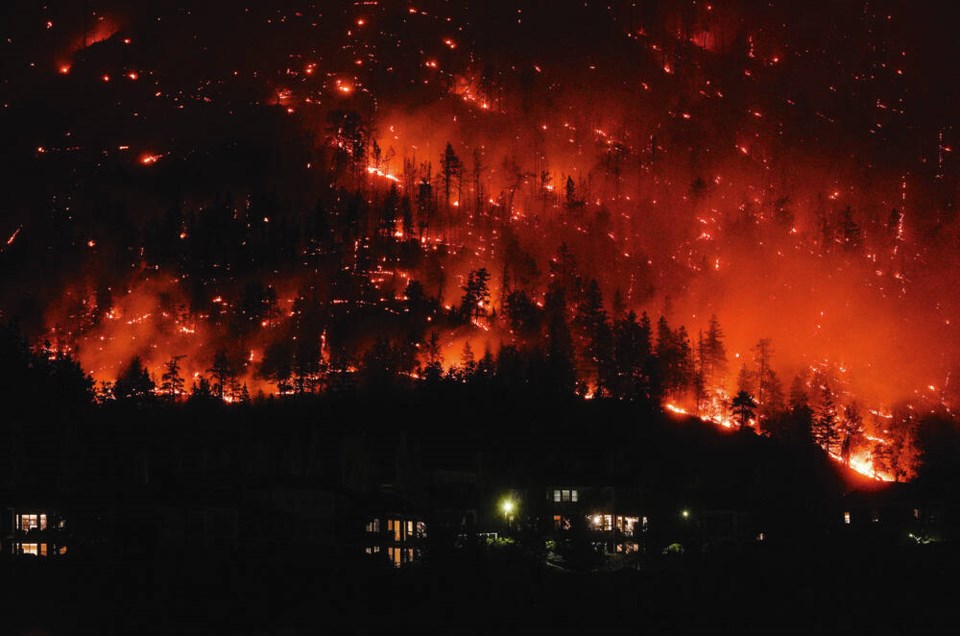A commentary by a retired forester who lives in Vernon.
I grew up in a small town in the Northwest Territories, which left me with a passion for trees and our natural ecosystems.
In 1977, I started my forestry career, starting with a wildfire suppression crew, and spent four decades learning and working in our forests — developing a profound respect for the ever-evolving forest environment and the different stages it goes through.
But now, it’s beyond frustrating to see us collectively ignoring the incredible advantage forest management can bring to Canadians.
Wildfires ravaged sa国际传媒’s landscape this year, scorching over 17 million hectares. From Halifax to West Kelowna to Yellowknife, fires consumed an area larger than England and more than double the previous record set in 1995.
Throughout the nation, tens of thousands were forced to leave their homes, hundreds of properties were reduced to ashes, and heavy smoke choked our skies and extended its reach far beyond our borders into large American cities.
According to preliminary numbers from Natural Resources sa国际传媒, wildfires emitted an astonishing 2.2 billion tonnes of carbon dioxide, triple sa国际传媒’s total annual greenhouse gas emissions from other sources.
This is equivalent to the annual emissions of 478 million cars or over 12 years of emissions from oil and gas and exceeded those of 100 individual nations combined, according to the Bulletin of Atomic Scientists.
However, wildfires are considered a natural source and not counted toward our emissions. We need to recognize that our efforts to reduce greenhouse gas emissions — carbon taxes, increasing use of electricity, green building codes and so on — will be in vain unless we confront wildfires and their emissions head-on.
Our forests are aging and deteriorating, resulting in factors that are contributing to increased wildfire activity. Climate change means longer wildfire seasons, more extreme weather conditions, increased droughts, and the amount of forest consumed by wildfires is projected to double by 2050.
Solutions exist, but they demand a significant transformation of our forest management approach.
First, we should incorporate wildfire emissions in our national and provincial greenhouse gas calculations. This step would bring the needed policy and financial focus to tackle our largest source of atmospheric impact.
Second, we must abandon the notion that forest preservation prevents wildfires. Instead, we should focus on reducing the age and density of our forests through comprehensive landscape-specific forest management plans. Finland provides a compelling example: Despite being just one third the size of sa国际传媒, it harvests more trees and has a 10-year average annual area burned of less than 300 hectares.
We should leverage the expertise of our foresters, collaborate with Indigenous communities, engage local stakeholders, and utilize the capabilities of the forest products sector to proactively mitigate fire risks near our communities and salvage burned timber. The creation of firebreaks, strategic forest thinning, and controlled burns can enhance landscape resilience.
Additionally, we must intensify our harvesting efforts to significantly reduce the wildfire menace that surrounds us. In sa国际传媒, the current 10-year average of 500,000 hectares burned annually compares with less than 190,000 hectares harvested, and we must be reverse this trend.
We have the means to reduce their scale and consequences of wildfires through proactive forest management, but it demands the collective commitment of both governments and the wider public.
The time has come to heed the wisdom of Albert Einstein and recognize that in every difficulty, there lies an opportunity. Our opportunity is clear: expand forest management, harvest more trees, and revise our climate strategy to focus on wildfire reduction.
By doing so, we protect our communities and environment, and stimulate economic growth and reduce greenhouse gas emissions.



